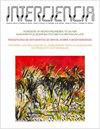Efficacy of botanicals alone and in combination with insecticide against Trilocha varians (Lepidoptera: Bombycidae) in controlled conditions
IF 0.4
4区 综合性期刊
Q4 ECOLOGY
引用次数: 0
Abstract
Ficus benjamina (Rosales: Moraceae), commonly known as weeping fig, is not only planted alongside the road as decorative plant in Pakistan but also has chemicals which used to treat cancer and ulcer. A leaf eating caterpillar, Trilocha varians (Lepidoptera: Bombycidae) is a serious pest of Ficus spp. especially Ficus benjamina. This is a new emerging pest of horticultural andagricultural crops all over the world. The pest is causing 100% defoliation and even death of plant.The severe attack of this pest has seen on F. bejamina. The current pest is invading to otherornamental plants, especially jackfruit (Artocarpus heterophyllus) in the world and becoming risk for other crops. There is need to minimize the pest population, but still no management strategies have adopted to control this pest in the world. The current experimental study was conducted to check the efficacy of botanicals alone and in combine application with insecticides against 2nd instar larvae of leaf eating caterpillar, T. varians under laboratory conditions. Results showed that among botanicals, Azadirachta indica was showed more toxicity as compared to Eucalyptus globulus. A. indica was showed the highest mortality (6.40%) of larvae at 72 hours of post treatment, whileminimum mortality (0.40%) at 24 hours. The combine application of A. indica and Emamectin benzoate was given maximum mortality (9.20�9.20) at 72 hours and minimum (1.80�3.20) at 24 hours. The mixture of emamectin benzoate and E. globulus was also found effective and toxic against second instar larvae but less than combine application of A. indica and Emamectin benzoate. In response to this new pest issue in the ornamental plants, control strategies includingbiological control alone and in combine with others chemicals are being developed in Pakistan.控制条件下植物药单用及与杀虫剂联用防治三叶虫(鳞翅目:家蝇科)的效果
榕树(Rosales: Moraceae),俗称哭泣的无花果,在巴基斯坦不仅作为装饰植物种植在路边,而且还含有用于治疗癌症和溃疡的化学物质。三叶虫是一种食叶毛虫(鳞翅目:蚕蛾科),是榕属植物尤其是榕树的严重害虫。这是一种新兴的危害世界各地园艺和农业作物的害虫。这种害虫导致植物100%落叶,甚至死亡。这种害虫的严重袭击已在白雅盲蝽身上见过。目前,该害虫正在对世界上其他观赏植物,特别是菠萝蜜(Artocarpus heterophyllus)造成危害,并对其他作物造成危害。有必要尽量减少害虫的数量,但世界上仍然没有采取管理策略来控制这种害虫。在实验室条件下,研究了植物药单独施用和与杀虫剂联合施用对食叶毛虫2龄幼虫的防治效果。结果表明,在植物中,印楝的毒性高于蓝桉。处理后72 h,印度纹夜蛾幼虫死亡率最高(6.40%),处理后24 h,死亡率最低(0.40%)。与苯甲酸埃维菌素联合施用,72 h死亡率最高(9.20�9.20),24 h死亡率最低(1.80�3.20)。苯甲酸埃维菌素与球姬螨混用对2龄幼虫的毒力和杀灭效果均较好,但低于与苯甲酸埃维菌素混用。为了应对这一新的观赏植物害虫问题,巴基斯坦正在制定包括单独生物防治和与其他化学品联合防治在内的防治策略。
本文章由计算机程序翻译,如有差异,请以英文原文为准。
求助全文
约1分钟内获得全文
求助全文
来源期刊

Interciencia
综合性期刊-生态学
CiteScore
0.80
自引率
25.00%
发文量
1
审稿时长
4-8 weeks
期刊介绍:
Interciencia is the monthly multidisciplinary publication of the INTERCIENCIA Association. It is dedicated to stimulate scientific research, its humanitarian use and the study of its social context, specially in Latin America and the Caribbean and to promote communication between the scientific and technological communities of the Americas.
Interciencia has been published uninterruptedly since 1976. Its Founding Director, Marcel Roche (endocrinologist and sociologist of science) was editor until 2008, and thereafter Miguel Laufer (neurobiologist) has been in charge. It has been included since 1978 in the Science Citation Index and other international indexes, and since 2008 it maintains an open access electronic version with material from 2005 onwards.
The priority areas of the journal, without exclusion of other areas, are Agronomy, Arid Lands, Food and Nutrition, Biotechnology, Ecology and Environment, Energy, Innovation and Technology Transfer, Marine Resources, Non-renewable Resources, Science Education, Science Policy, Study and Sociology of Science, and Tropical Forests.
Interciencia publishes in Spanish, Portuguese and English research and review articles, communications and essays, all of which are subjected to peer review. Additionally, it includes non-refereed sections such as Editorial, Letters to the Editor, Open Town Hall, Book Reviews and Upcoming Events.
All the material submitted to the journal for publication and accepted by the Editorial Committee in view of its quality and pertinence is subjected to review by peer specialists in the corresponding fields of knowledge. Neither the INTERCIENCIA Association, nor the journal or the institutions to which the authors belong carry responsibility for the contents. Signing authors are responsible for the material published under their names.
 求助内容:
求助内容: 应助结果提醒方式:
应助结果提醒方式:


